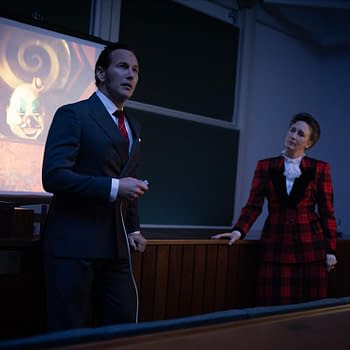Posted in: Movies | Tagged: agatha christie, entertainment, film, Hercule Poirot, HRL, kenneth branagh, murder on the orient express
Murder on the Orient Express: The Changes Made from the Novel
Having watched Murder on the Orient Express on Thanksgiving day, I decided it would be good to re-read the original Agatha Christie novel since I hadn't read it since I was a teenager. And by "read" I mean go out to Audible.com and find a copy to listen to, because I don't have time to actually sit and read much.
A quick search gave me three unabridged options (always pick the unabridged). One was a full-cast recording, which would've been my first choice… except there was a more recently produced movie tie-in version with Kenneth Branagh narrating. How could I go wrong with the man who is currently playing the great Hercule Poirot in the film he himself directed?
It's a very well done performance showcasing both the amazing writing of Christie and the voice talent of Branagh. But what struck me were some of the changes made between the book and the film and how overall, there really weren't that many. Here are the noticeable differences between the original Agatha Christie novel and the Kenneth Branagh film (spoilers):
- The first change is the opening itself. Branagh added a scene that introduced the readers to Poirot as he reveals the thief to a crime using his brilliant skills of observation and deductive reasoning — understanding the psychology of people and making good guesses. He's Sherlock Holmes without the arrogance. And the scene is a great way to introduce the detective. Christie just took you right into the story.
- The character of Bouc is no longer the manager of the railway, but the son of the manager, making him more of a contemporary to Poirot. No really reason for the change other than the ability to cast a younger actor.
- The passenger that never arrives, Mr. Harris, is never explained in the film. In the book we learn that they didn't want anyone else on the train so they booked the final birth under a fictional name to keep anyone else from getting on.
- There are a few nationality changes like like the Swedish maid becomes Pilar Estravados, a character that appears in a different Poirot novel. No real changes to the overall story; this just allows for a more diverse casting. Something that Christie originally tried to do herself, noted in a comment by Poirot in the book that only in America could you have so many diverse nationalities in the same place at the same time like on the train that trip.
- Less attention was paid to the fact that the train was full at a time when it was never full. It's mentioned multiple times in the novel, but only once in the film.
- A pair of characters were combined. Colonel Arbuthnot and Doctor Constantine became Doctor Arbuthnot, eliminating one character from the train. The Doctor in the novel was a bit redundant by Bouc as they both played Poirot's sidekick and foil.
- In the novel, Mrs Hubbard finds the killer's knife in her sponge bag and becomes overwrought. In the film, Mrs Hubbard finds the killer's knife in her shoulder and becomes overwrought from being stabbed. A minor injury, but very different from the book.
- The woman who hanged herself after being falsely accused of kidnapping the Armstrong child… in the novel, she is the conductor's daughter. In the film, she is his brother and had been a love interest of Mr. Hardman, giving him reason to be on the train. Hardman's motivation in the novel is not as clear.
- At no point in the novel do they ever address how the train will be started again. The film has a crew showing up and working, but it's not even mentioned in the book. They just sit there grumbling and assuming someone will come.
- The biggest and most dramatic change between the film and novel is the very ending, besides it taking place on the tracks in the tunnel as opposed to in the dining car in the novel and there are no weapons. Poirot putting the pistol down and telling them to shoot him or he will tell of their guilt… all new. Very dramatic and well place. I thought it worked nicely and was a calculated way for Poirot to know if any of these people were outright killers or just part of this because of the heinous nature of the crime. The novel ending is much more subdued, with Poirot giving forth two versions of the crime: one with an escaped killer and the other, the truth… Bouc and Constantine decide to go with the escaped killer theory.
It's rare to see a novel adapted so closely to the source material. The changes made either did little to change the story or improved it without losing the heart of the tale. And I found myself enjoying both versions very much.















